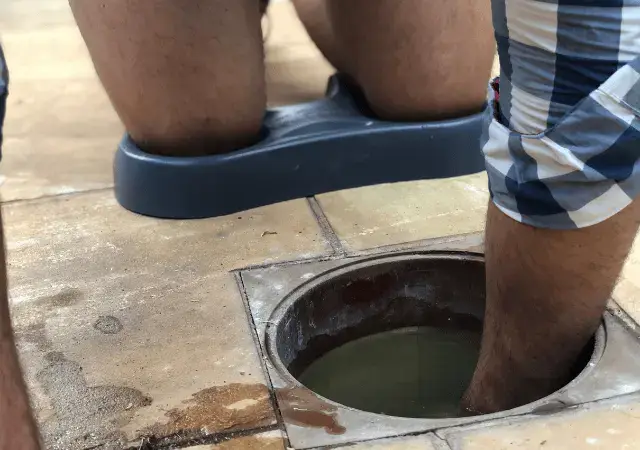No-dig vegetable gardening has been a game-changer for me over the years. By avoiding soil disruption, I’ve found that my garden not only produces healthier crops but also requires far less effort in terms of weeding and maintenance. In this guide, I’ll walk you through a detailed, month-by-month plan for a thriving no-dig vegetable garden, sharing insights from my experience and the tools that help me along the way—like the Kneepal kneeling pad.
January – Plan and Prepare your No-dig vegetable gardening space
- Tasks:
- Start the year by planning your garden layout. Consider crop rotation and companion planting to maximize space and deter pests. Sketch your garden beds and decide where each vegetable will go.
- Order your seeds early to ensure availability. Look for hardy vegetables that can be sown indoors or in a greenhouse, like kale, broccoli, and leeks.
- Gather materials for your no-dig beds: cardboard, well-rotted compost, straw, and mulch.
- Tools Needed: A good pair of gardening gloves, pruners for cutting cardboard to fit your beds, planter boxes, and a Kneepal kneeling pad to protect your knees during prep work.
- We recommend these sturdy planter boxes to withstand the seasons and garden tools if you, like me, prefer container gardening. If you prefer the traditional galvanised steel look these are a great size to get started with (4 x 2ft) and my personal favourite. If bending is not a plan then choose raised or tiered flower boxes. These also help with keeping the plants \’warmer\’ during those colder months as the sun penetrates the soil.
February – Build Your No-Dig Beds
- Tasks:
- On a dry day, begin constructing your raised flowerbeds. Start by laying down a thick layer of cardboard to suppress weeds. Wet the cardboard to help it break down faster.
- Cover the cardboard with 4-6 inches of well-rotted compost. Add a layer of mulch (such as straw) to retain moisture and further suppress weeds.
- If you have an established no-dig bed, now is the time to top up with fresh compost.
- Plants: Continue sowing hardy seeds indoors. Start onions, broad beans, and early peas in pots or modules. We buy seed bumper packs to save on shipping. Most brands will do but do read the instructions on the back of the pack before sewing.
- Tools Needed: A wheelbarrow for transporting compost, a sturdy spade, and a Kneepal kneeling pad for comfortable ground work.
March – Sow Early Crops
- Tasks:
- Begin sowing early crops directly into your no-dig beds if the weather is mild. Broad beans, carrots, parsnips, and peas can all go in now.
- Check your mulch layer; add more straw or leaf mold if needed to maintain a consistent cover.
- Keep an eye on emerging weeds. Although the no-dig method reduces weeds, any that appear should be removed by hand.
- Plants: Plant early potatoes, onions, and shallots in prepared beds.
- Tools Needed: A hand trowel, Kneepal kneeling pad, and a weed fork.
April – Transplant Seedlings
- Tasks:
- Harden off seedlings by gradually exposing them to outdoor conditions before transplanting.
- Transplant seedlings into your no-dig beds once the risk of frost has passed. Space them according to their growth habits to avoid overcrowding.
- Keep watering consistently, especially during dry spells.
- Plants: Cabbage, lettuce, and spinach can be transplanted outdoors. Sow seeds for beets, radishes, and turnips.
- Tools Needed: Watering can or hose, seed dibber.
May – Plant Warm-Season Crops
- Tasks:
- Plant warm-season crops like tomatoes, peppers, and cucumbers once the soil warms up. Use cloches or row covers to protect from unexpected cold snaps.
- Mulch around plants to retain moisture and suppress weeds.
- Stake tall plants like beans and peas for support as they grow.
- Plants: Sow beans, squash, sweetcorn, and pumpkins directly into the beds.
- Tools Needed: Stakes, twine, cloches for all planting tasks.
June – Maintain and Mulch
- Tasks:
- This is a busy month! Keep up with regular watering, especially in dry spells. Water deeply to encourage strong root growth.
- Continue adding mulch around plants to conserve moisture.
- Monitor for pests like slugs and aphids; hand-pick or use organic deterrents.
- Plants: Plant second batches of fast-growing crops like lettuce and radishes for continuous harvests.
- Tools Needed: Watering tools & organic pest control for all low-level tasks.
- Tip: for organic pest control we use a combo of garlic, tea-tree oil, cinnamon and dish soap.
- 4 cloves garlic, crushed
- 10 drops tea-tree essential oil
- 1 tablespoons cinnamon
- 2 tablespoons dish soap liquid
- Water (about 3 pints)
July – Harvest and Succession Planting
- Tasks:
- Harvest early crops like broad beans, peas, and lettuce.
- Clear space in your beds for new plantings. Add a layer of compost before sowing or transplanting.
- Keep the garden weed-free and top up mulch as necessary.
- Plants: Plant autumn and winter crops like kale, broccoli, and cabbage.
- Tools Needed: Harvesting basket, pruning shears, and your Kneepal (p.s. how domesticated does one feel being in one\’s garden with a harvesting basket? Just call me to whip up some jam and make a wreath while you are at it, there are no limit\’s to what this gal (or guy) can do!)
August – Continue Harvesting and Planting
- Tasks:
- Continue harvesting crops as they mature. Remove any plants that have finished producing to make space for new sowings.
- Sow green manures like clover or rye in empty spaces to improve soil fertility for next season.
- Regularly check for pests and diseases; remove affected plants promptly.
- Plants: Sow late-season crops like spinach, lettuce, and radishes.
- Tools Needed: Hand fork for light soil work & organic pest control solutions, and Kneepal kneeling pad.
September – Prepare for Winter
- Tasks:
- No-dig vegetable gardening is particulary useful in the upcoming winter months and September is the right time to start preparing your beds for winter. Clear away dead plants and add a layer of compost to feed the soil over the winter months.
- Continue harvesting late-season crops and store them properly.
- Plant garlic and overwintering onions.
- Plants: Plant garlic, onions, and broad beans for overwintering.
- Tools Needed: Garden fork & mulch materials
October – Tidy and Mulch
- Tasks:
- Clean up garden beds, removing any diseased or spent plants.
- Top up compost and mulch to protect the soil from winter erosion.
- Prune perennial vegetables and herbs.
- Plants: Consider planting cover crops or green manure to protect and enrich the soil.
- Tools Needed: Pruning shears, compost bin
November – Protect and Prepare
- Tasks:
- Protect tender plants with fleece or cloches. Mulch heavily around perennials to insulate roots.
- Reflect on the growing season and plan changes for next year.
- Ensure garden tools are clean and stored properly.
- Tools Needed: Garden fleece, wellies & winter cloches
December – Rest and Reflect
- Tasks:
- Review your garden journal, noting successes and areas for improvement.
- Relax and enjoy the fruits of your labor, planning for next year.
- Maintenance tasks like sharpening tools, oiling wooden handles, and organizing your seed inventory.
- Tools Needed: Get your tools sharpened or replaced, in need
Conclusion
No-dig vegetable gardening is a rewarding approach that minimizes labor and maximizes soil health. There is also a strong recomendation to opt for raised flowerbeds if you battle with kneepain or backache.
By following this month-by-month plan and using the right tools you’ll have a productive garden with less effort. Whether you\’re just starting or have years of experience, there’s always something new to learn and enjoy in the world of no-dig vegetable gardening. Happy gardening!




